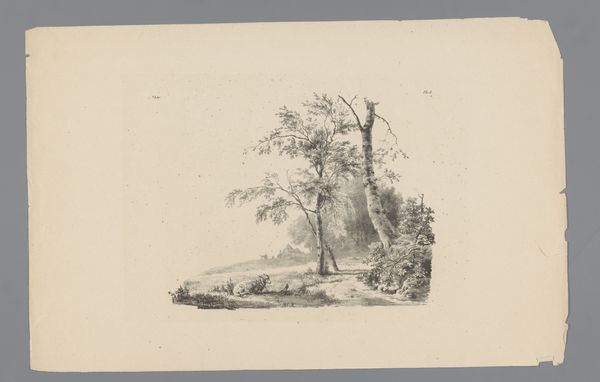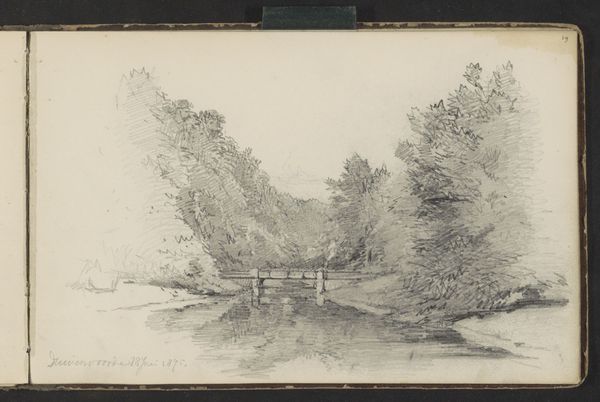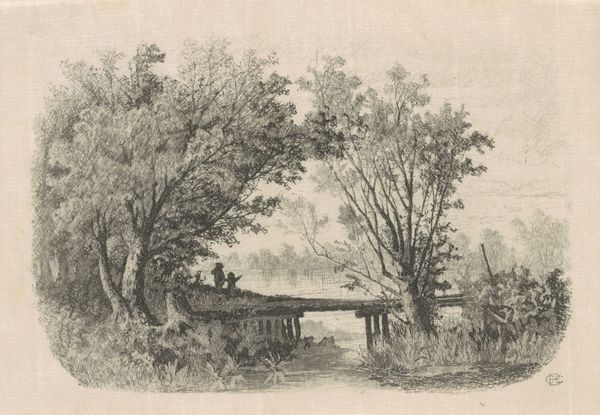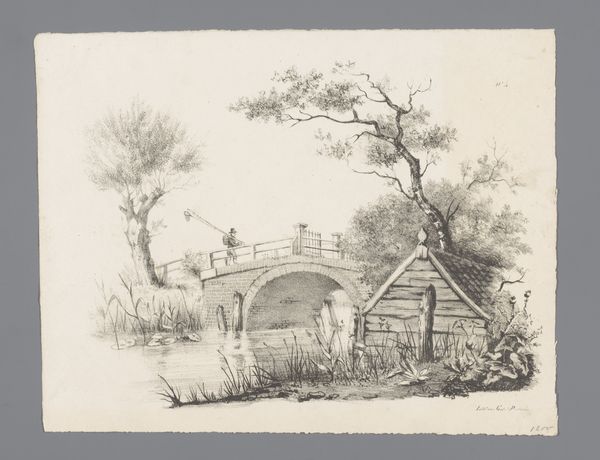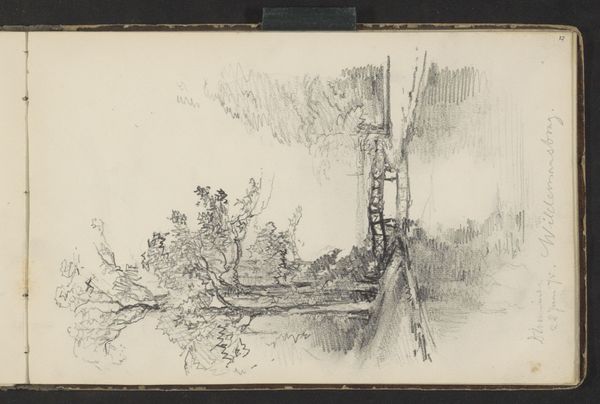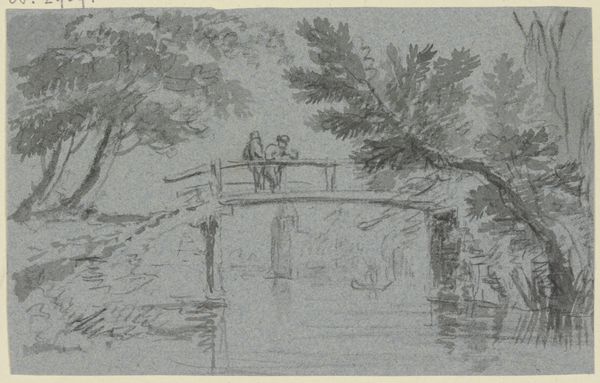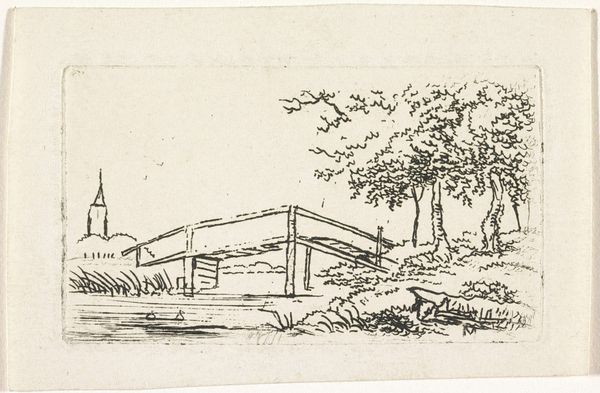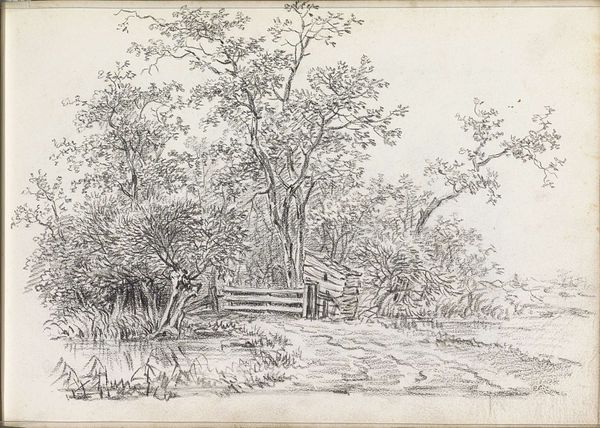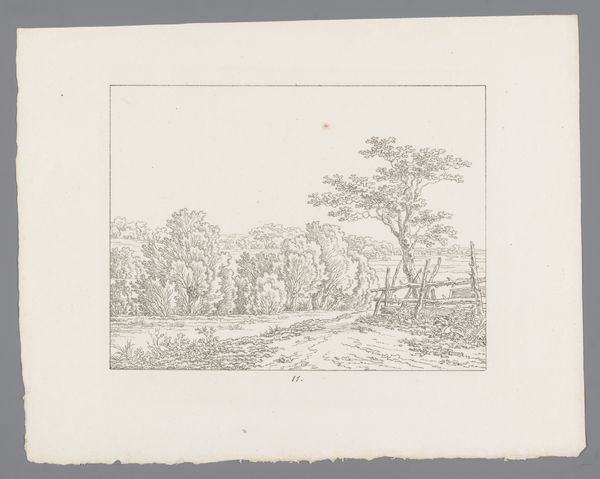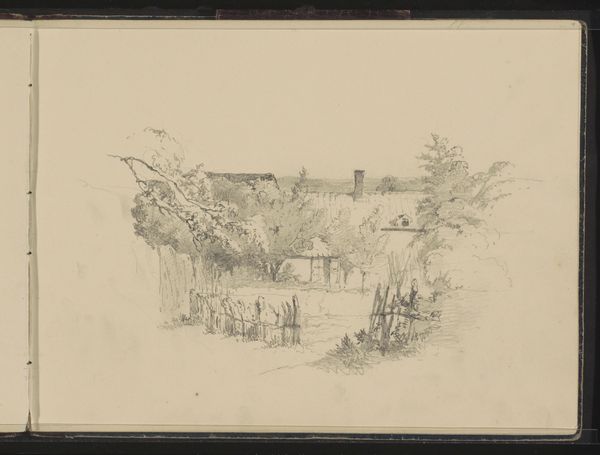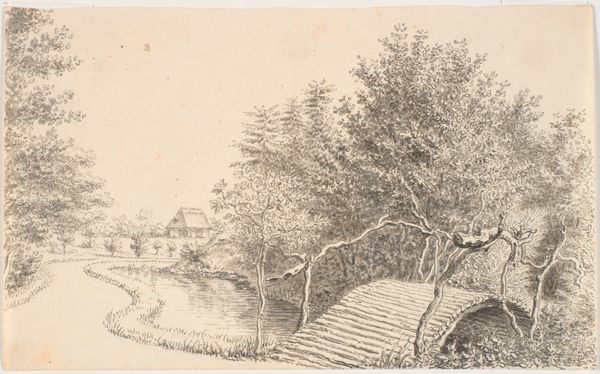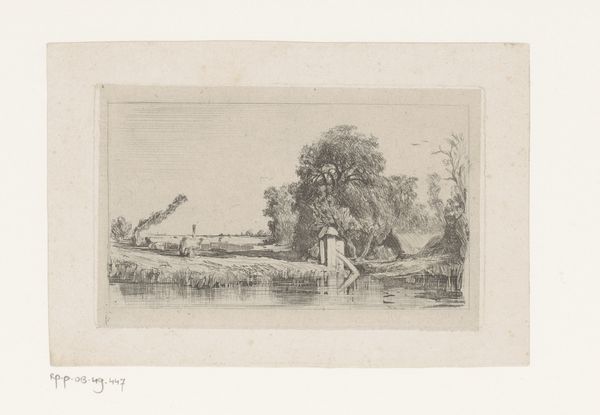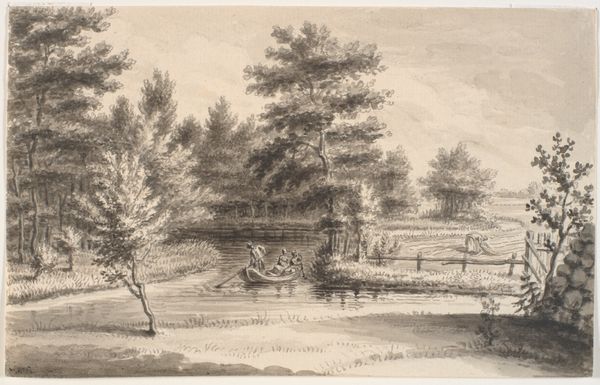
drawing, paper
#
drawing
#
landscape
#
paper
#
romanticism
#
realism
Dimensions: height 168 mm, width 250 mm
Copyright: Rijks Museum: Open Domain
Curator: This is a beautiful drawing entitled "Brug en een knotwilg," which translates to "Bridge and a Pollarded Willow," created by Cornelis de Kruyff. The Rijksmuseum dates it between 1809 and 1854. Editor: It feels so intimate. Like a stolen moment captured in simple lines. There’s a gentle melancholy to it, almost a hush. The delicate use of line to create the ripples in the water are remarkable. Curator: It is indeed a quiet piece, characteristic of the landscape art popular in the Netherlands at that time. What stands out to me is how De Kruyff positions the bridge not just as a functional object, but as a feature deeply entwined with nature. Consider how the bridge seems to rise organically from the riverbank, connected intimately to the weeping willow. Editor: Yes, it feels almost subversive. Here we have an ostensibly utilitarian subject, yet its romantic framing invites considerations regarding humans’ fragile attempts to coexist with nature—and I say "attempts" consciously. This depiction feels idealized and inherently unsustainable. Curator: That’s an interesting point. Given its probable creation date in the early 19th century, we are seeing a Romantic interpretation, filtering observed reality through an aesthetic lens informed by ideas of the sublime. De Kruyff, and indeed, the Dutch art world at the time, would have likely embraced imagery conveying a sense of national identity and pride connected with rural landscapes. Editor: Right, it speaks to the construction of national narratives that elide the complexities of the time, especially regarding issues of class and labor related to managing this "nature". Who benefits from that bridge? Whose labor maintains it and the landscape around it? Curator: A valid concern. This landscape does function within broader socio-political narratives. But I also think De Kruyff sought to portray the enduring qualities of the Dutch landscape, reflecting perhaps on more timeless themes, a theme to offer solace during periods of political upheaval. Editor: Perhaps, though I remain skeptical about appeals to "timelessness" in art, given how constructed these ideas tend to be. For me, the artwork’s quiet beauty opens a dialogue between idyllic representation and a much more nuanced reality. Curator: A dialogue which, hopefully, continues for our visitors too. Editor: Agreed, let’s hope it sparks conversation and critical reflection.
Comments
No comments
Be the first to comment and join the conversation on the ultimate creative platform.
